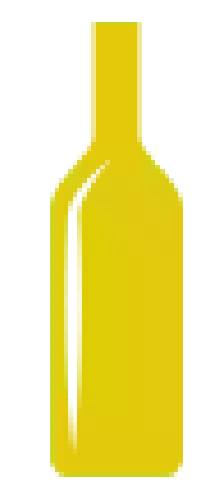
Cave du Roi DagobertCuvée de la Cathédrale
This wine is a blend of 2 varietals which are the Auxerrois and the Pinot blanc.
In the mouth this sparkling wine is a powerful with a nice vivacity and a fine and pleasant bubble.
This wine generally goes well with poultry, appetizers and snacks or lean fish.
Taste structure of the Cuvée de la Cathédrale from the Cave du Roi Dagobert
Light | Bold | |
Soft | Acidic | |
Gentle | Fizzy |
In the mouth the Cuvée de la Cathédrale of Cave du Roi Dagobert in the region of Alsace is a powerful with a nice vivacity and a fine and pleasant bubble.
Food and wine pairings with Cuvée de la Cathédrale
Pairings that work perfectly with Cuvée de la Cathédrale
Original food and wine pairings with Cuvée de la Cathédrale
The Cuvée de la Cathédrale of Cave du Roi Dagobert matches generally quite well with dishes of shellfish, poultry or appetizers and snacks such as recipes of tagliatelle with scallops, korean bibimbap or brioche shuttles.
Details and technical informations about Cave du Roi Dagobert's Cuvée de la Cathédrale.
Discover the grape variety: Auxerrois
Auxerrois is a white grape variety native to Lorraine, which is also found in Alsace and in the Loire Valley, where it took off in 1950. Its name comes from the nurseries in Auxerre where it found refuge during the Second World War. Often called Pinot Auxerrois, it is part of the Moselle, Alsace and Côtes-de-Toul AOC grape varieties. Auxerrois should not be confused with côt or malbec, which are red grape varieties from the Cahors region and which may bear the same name. The bunches of Auxerrois are of medium size with small berries. It is a semi-late grape variety whose buds only come out when temperatures are well above 10°C. Auxerrois wines are characterized by finesse and acidity and subtle aromas of exotic fruits, fruits and white flowers. In France, it represents 1,600 hectares of production and some small parcels of Auxerrois are also present in Luxembourg, Germany, Canada and South Africa (2,300 hectares in total).
Informations about the Cave du Roi Dagobert
The Cave du Roi Dagobert is one of of the world's great estates. It offers 89 wines for sale in the of Crémant d'Alsace to come and discover on site or to buy online.
The wine region of Crémant d'Alsace
Crémant d'Alsace is the appellation for white and rosé Sparkling wines from the Alsace wine region in northeastern France. Introduced in August 1976, the appellation now accounts for about a quarter of the region's production, or about 45 million bottles per year, up from 31 million in 2009. Outside of Champagne (240km to the west), it is the dominant French sparkling wine appellation, with more than half of all crémant production. The cooperatives are the most important players, with Wolfberger alone producing 6 to 7 million bottles.
The wine region of Alsace
Alsace, located in the extreme north-east of France, is Distinguished from other French wine regions by its strong Franco-Germanic influences. These influences are the result of a back-and-forth between the German and French sovereignties over the last few centuries. They can be seen not only in the architecture and culture of Alsace, but also in the wines. Alsace wines are produced under three main appellations: Alsace and Alsace Grand Cru for still white wines (Sweet and Dry), and Crémant d'Alsace for Sparkling wines.
News related to this wine
The Rully appellation investigated through its geology and geography
The Bourgogne Wine Board (BIVB) invites you to enjoy this video in which Jean-Pierre Renard, Expert Instructor at the Ecole des Vins de Bourgogne, explains the topographical and geological characteristics of the Rully appellation. Here the vineyard is planted on different hills which have very different gelogicial characteristics. It partly explains the great diversity in the expression of the Rully wines. This video is taken from the “Rendez-vous avec les vins de Bourgogne” program (February 20 ...
The Mâcon plus appellation seen by Théo et Hugo Merlin
Théo and Paul Merlin are winegrowers at the Domaine Merlin, they emphasizes the characteristics of the appellation Mâcon La Roche Vineuse. This video is taken from the “Rendez-vous avec les vins de Bourgogne” program (March 2020). Our social media: Facebook: https://www.facebook.com/BourgogneWines Twitter: https://twitter.com/BourgogneWines/ Instagram: https://www.instagram.com/vinsdebourgogne/ LinkedIn: https://www.linkedin.com/company/bivb Find out more on our website: https://www.bourgogn ...
Geographical denomination: The first step towards the notion of terroir – Focus Bourgogne
We created this photomontage, to show you the landscapes and the different characteristics of the 14 geographical denominations of the Bourgogne appellation: Wine colors, grape varieties, soil specificities, surface area and production. You’ll become an expert on the Bourgogne appellation! Our social media: Facebook: https://www.facebook.com/BourgogneWines Twitter: https://twitter.com/BourgogneWines/ Instagram: https://www.instagram.com/vinsdebourgogne/ LinkedIn: https://www.linkedin.com/comp ...
The word of the wine: Phylloxera
Aphid that came from America and ravaged European vineyards at the end of the 19th century. It lives on the roots of the vine, from which it pumps the sap. The only vines capable of resisting it had to be imported from the United States, and then grafted onto their root system the wood of traditional French grape varieties. Today, grafted vines are always planted.














